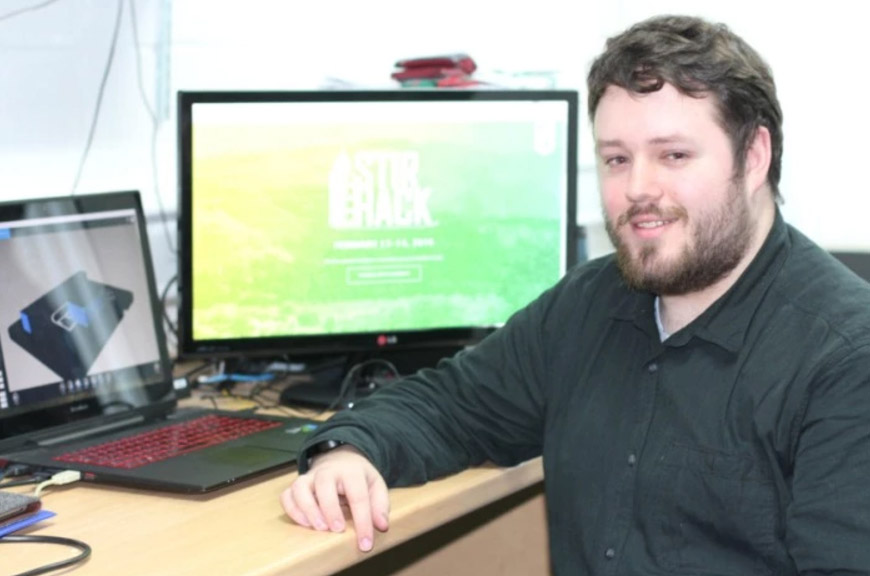2017 marks the 400th anniversary of the official grant of British patent number one. To mark the occasion, the UK government is launching a new campaign to highlight some of the amazing innovations developed in Britain over the last four centuries.
We’re one of many UK universities playing a leading role in supporting the development of ground-breaking ideas. To celebrate 400 years of imagination, here’s three of our favourite examples of Stirling imagination and innovation.
The hearing aid that can see
A next-generation hearing aid that can ‘see’ is being developed by a University of Stirling computer scientist-led multidisciplinary team of researchers and clinicians. Designed to help users in noisy environments, the device will use a miniaturised camera that can lip read, process information in real time, and seamlessly fuse and switch between audio and visual cues.

There are more than 10 million people in the UK – one in six of the population – with some form of hearing loss. By 2031, this is estimated to rise to 14.5 million. Professor Amir Hussain is leading the ambitious joint research project – which has received nearly £500,000 from the UK Government’s Engineering and Physical Sciences Research Council (EPSRC) and industry.
An app to help others
A University of Stirling software engineering student led the project to develop a mobile application aimed at helping people with autism cope better with life changes.
Working in collaboration with Stirling and Clackmannanshire Councils, Craig Docherty – who is now a University researcher – devised a clever app which allows people with autism to input key information about their likes and dislikes and preferred means of communication.

With help from fellow Stirling students Daniel Gibbs and Michael Baylis, Craig designed a prototype after seeing a call for an app to assist people with Autism Spectrum Disorder (ASD) with various tasks, including preparing for hospital visits and meetings.
The app was launched in April 2016 by Stirling Council as part of Autism Awareness Month.
Identifying offenders through facial recognition
Stirling researchers developed a facial recognition system called the EvoFIT, which allows witnesses and victims of crime to easily construct offenders’ facial features into a digital image.

Stirling’s Professor Peter Hancock worked with colleagues from Newcastle, Central Lancashire and Winchester universities to develop the computerised system which is now being used by police forces around the world. Unlike traditional identity methods, the system doesn’t require eyewitnesses to have good recall of an offender’s face, and instead taps into the witness’ ability to recognise the face as a whole.
A number of faces containing random features such as eyes, noses and mouths are displayed and a witness selects a few options that are most similar to the offender. These selections are then mixed together to produce another set. This process is repeated to produce an evolved image which gives the most accurate likeness to the offender.
Want to know more about the innovative, impactful research going on at the University of Stirling? See what’s new in our research community.

